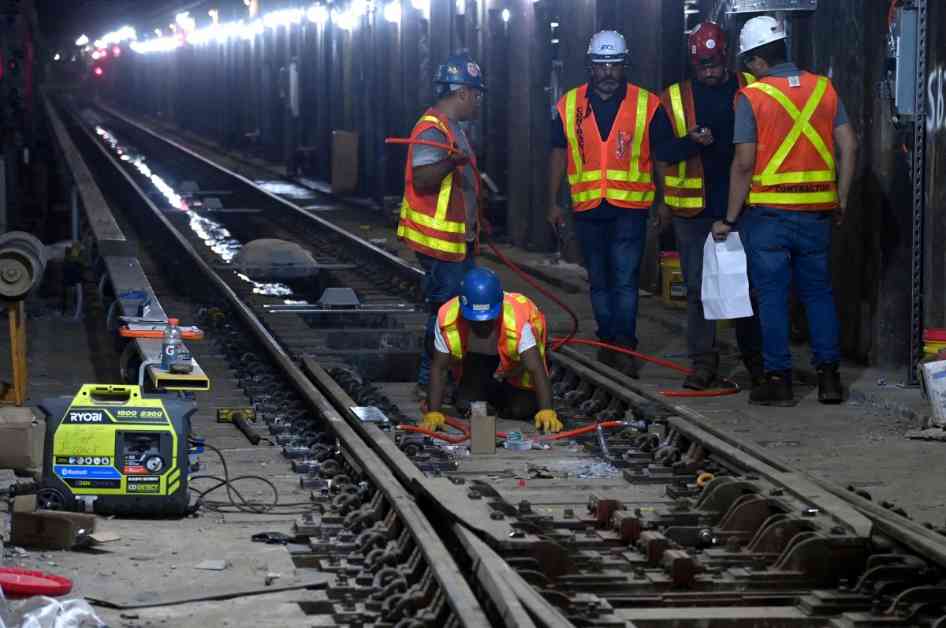The Metropolitan Transportation Authority (MTA) recently unveiled an ambitious $68.4 billion capital plan aimed at modernizing New York City’s transit system over the next five years. However, questions surrounding the funding for this massive project still linger due to Governor Kathy Hochul’s decision to pause congestion pricing, a key revenue source for the MTA.
MTA’s Bold Capital Plan
The proposed capital plan for 2025-2029 represents a substantial increase from the previous plan, with a focus on enhancing the subway and commuter rail systems. The MTA aims to introduce a significant number of new railcars, construct 60 new subway stations and six commuter rail stations, invest in signal modernization and fare gates, allocate $9 billion for critical structure repairs, and allocate nearly $8 billion for station environment improvements.
The MTA board is set to vote on the capital plan on Sept. 25, with a submission deadline to the State Capital Program Review Board on Oct. 1. However, the funding aspect of the plan remains uncertain following Governor Hochul’s decision to halt congestion pricing, which was expected to generate $1 billion annually for the MTA through tolls on drivers entering Manhattan.
Funding Challenges
The pause on congestion pricing has created a $15 billion funding gap that needs to be addressed in order to fully implement the capital plan. While Governor Hochul has promised to find alternative funding sources, no concrete plans have been put forth from Albany as of yet.
MTA Chief Financial Officer Kevin Willens mentioned that the authority is considering issuing $10 billion in MTA-issued bonds to help fund the capital plan. Additionally, the MTA anticipates receiving around $21 billion from federal funding, state, and city bonds. However, specific funding numbers have not been finalized as approval for funding sources is still pending.
The current deficit of around $33 billion highlights the need for additional funding sources to be identified to bridge the gap and ensure the successful implementation of the capital plan.
Details of the Capital Plan
The 2025-2029 Capital Plan draws on the MTA’s 20-Year Needs Assessment, outlining the transportation capital needs for the region in the coming years. The plan includes ordering 2,000 new railcars at a cost of $10.9 billion, with a focus on improving reliability by replacing aging subway and railroad fleets.
Other key components of the plan include the introduction of 60 ADA-compliant subway stations and six ADA-compliant railroad stations, signal modernization, and upgrades to fare gates to reduce fare evasion and improve accessibility. The plan also addresses critical structure repairs, invests in power systems to avoid disruptions, and includes investments to combat the effects of climate change.
The MTA aims to enhance subway resilience, improve air quality with zero-emission buses, and invest in rapid transit projects like the Interborough Express. However, the plan does not include the expansion of the Second Avenue subway, as it is fully funded through previous capital plans.
Challenges and Responses
The pause on congestion pricing has raised concerns about the viability of the capital plan and the delay of certain projects until funding is restored. MTA officials express confidence in the state government’s commitment to restoring the $15 billion in funding from congestion pricing, which is crucial for the successful implementation of the plan.
Governor Hochul has pledged to review the capital plan and work towards securing additional funding through various channels, including federal infrastructure dollars and collaboration with legislative partners. However, critics like Lisa Daglian from the Permanent Citizens Advisory Committee to the MTA have voiced concerns about the impact of the funding pause on essential projects and services for riders.
In conclusion, the MTA’s ambitious capital plan for 2025-2029 holds promise for modernizing NYC’s transit system but faces significant challenges in securing funding. The outcome of ongoing discussions and negotiations will determine the fate of critical projects and the overall success of the plan in improving transportation infrastructure for millions of New Yorkers.



